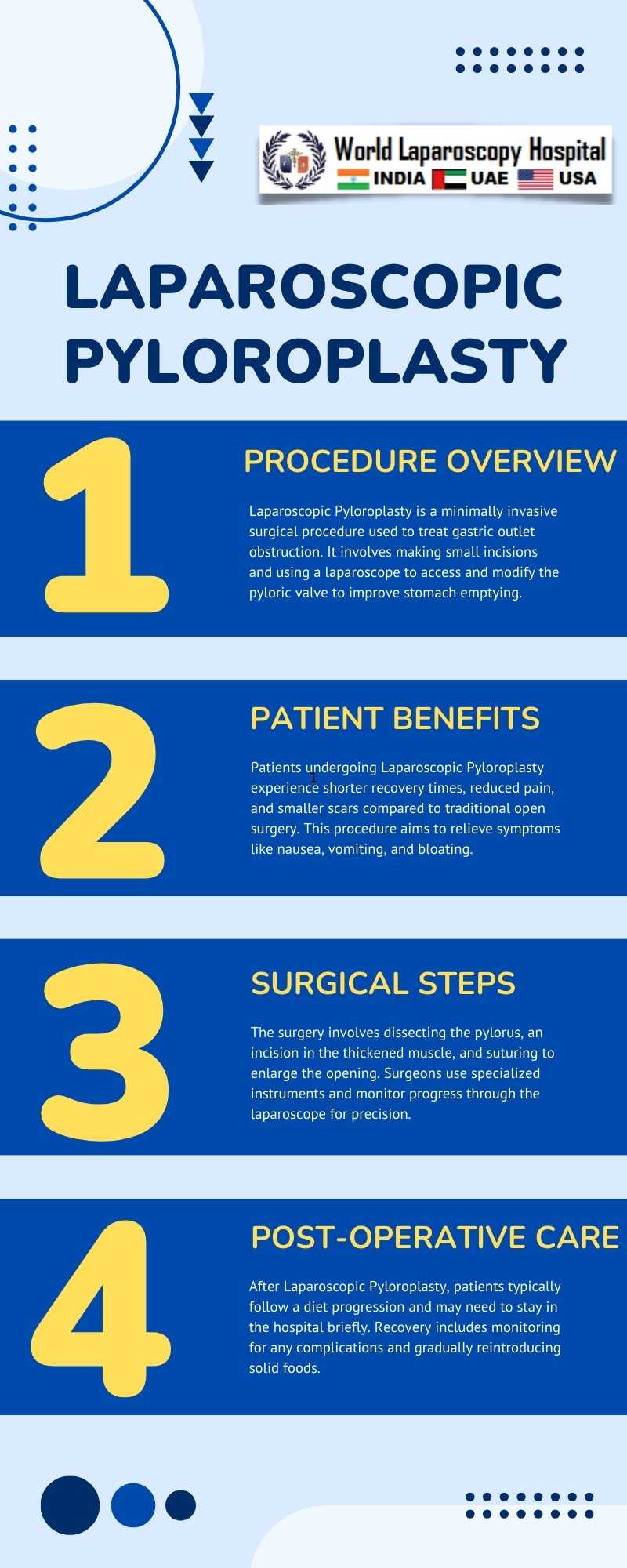Advancements in Laparoscopic Pyloroplasty: Improving Pyloric Valve Function
Laparoscopic pyloroplasty, a minimally invasive surgical technique, has experienced significant advancements in recent years, leading to improved outcomes in treating conditions related to the pyloric valve. This article delves into these advancements, highlighting their impact on surgical procedures and patient recovery.

Evolution of Technique and Technology
Initially, laparoscopic pyloroplasty was an adaptation of open surgery techniques. However, with advancements in technology, this procedure has become more refined. Surgeons now have access to high-definition cameras and more precise instruments, allowing for greater visibility and control during surgery. Robotics has also entered the field, offering enhanced precision and steadiness, which is crucial in delicate procedures like pyloroplasty.
Improved Patient Outcomes
One of the most significant benefits of these advancements is the improvement in patient outcomes. The minimally invasive nature of laparoscopic pyloroplasty results in smaller incisions, leading to reduced postoperative pain, lower risk of infections, and quicker recovery times. Studies have shown a decrease in hospital stays and quicker return to normal activities.
Enhanced Diagnostic and Therapeutic Capabilities
Advancements in diagnostic tools have also played a crucial role. Improved imaging techniques, such as high-resolution endoscopy, allow for more accurate assessments of the pyloric valve prior to surgery. This precision in diagnosis ensures that only patients who will significantly benefit from the procedure are selected.
Training and Skill Development
With the introduction of more sophisticated techniques, the need for specialized training has become more pronounced. Surgical training programs now incorporate simulation-based training, allowing surgeons to hone their skills in a risk-free environment. This focus on training ensures that surgeons are well-equipped to handle the complexities of laparoscopic pyloroplasty.
Future Directions
The future of laparoscopic pyloroplasty looks promising, with ongoing research in areas like biocompatible materials for better postoperative healing and the development of more advanced robotic systems. There is also a growing interest in the potential of artificial intelligence to assist in preoperative planning and intraoperative decision-making.
Conclusion
The advancements in laparoscopic pyloroplasty represent a significant stride forward in surgical techniques. These innovations not only enhance the efficacy of the procedure but also significantly improve patient experiences. As technology continues to evolve, the field of laparoscopic surgery is poised for even more groundbreaking developments, continuing to transform the landscape of surgical care.

Evolution of Technique and Technology
Initially, laparoscopic pyloroplasty was an adaptation of open surgery techniques. However, with advancements in technology, this procedure has become more refined. Surgeons now have access to high-definition cameras and more precise instruments, allowing for greater visibility and control during surgery. Robotics has also entered the field, offering enhanced precision and steadiness, which is crucial in delicate procedures like pyloroplasty.
Improved Patient Outcomes
One of the most significant benefits of these advancements is the improvement in patient outcomes. The minimally invasive nature of laparoscopic pyloroplasty results in smaller incisions, leading to reduced postoperative pain, lower risk of infections, and quicker recovery times. Studies have shown a decrease in hospital stays and quicker return to normal activities.
Enhanced Diagnostic and Therapeutic Capabilities
Advancements in diagnostic tools have also played a crucial role. Improved imaging techniques, such as high-resolution endoscopy, allow for more accurate assessments of the pyloric valve prior to surgery. This precision in diagnosis ensures that only patients who will significantly benefit from the procedure are selected.
Training and Skill Development
With the introduction of more sophisticated techniques, the need for specialized training has become more pronounced. Surgical training programs now incorporate simulation-based training, allowing surgeons to hone their skills in a risk-free environment. This focus on training ensures that surgeons are well-equipped to handle the complexities of laparoscopic pyloroplasty.
Future Directions
The future of laparoscopic pyloroplasty looks promising, with ongoing research in areas like biocompatible materials for better postoperative healing and the development of more advanced robotic systems. There is also a growing interest in the potential of artificial intelligence to assist in preoperative planning and intraoperative decision-making.
Conclusion
The advancements in laparoscopic pyloroplasty represent a significant stride forward in surgical techniques. These innovations not only enhance the efficacy of the procedure but also significantly improve patient experiences. As technology continues to evolve, the field of laparoscopic surgery is poised for even more groundbreaking developments, continuing to transform the landscape of surgical care.
No comments posted...
| Older Post | Home | Newer Post |

